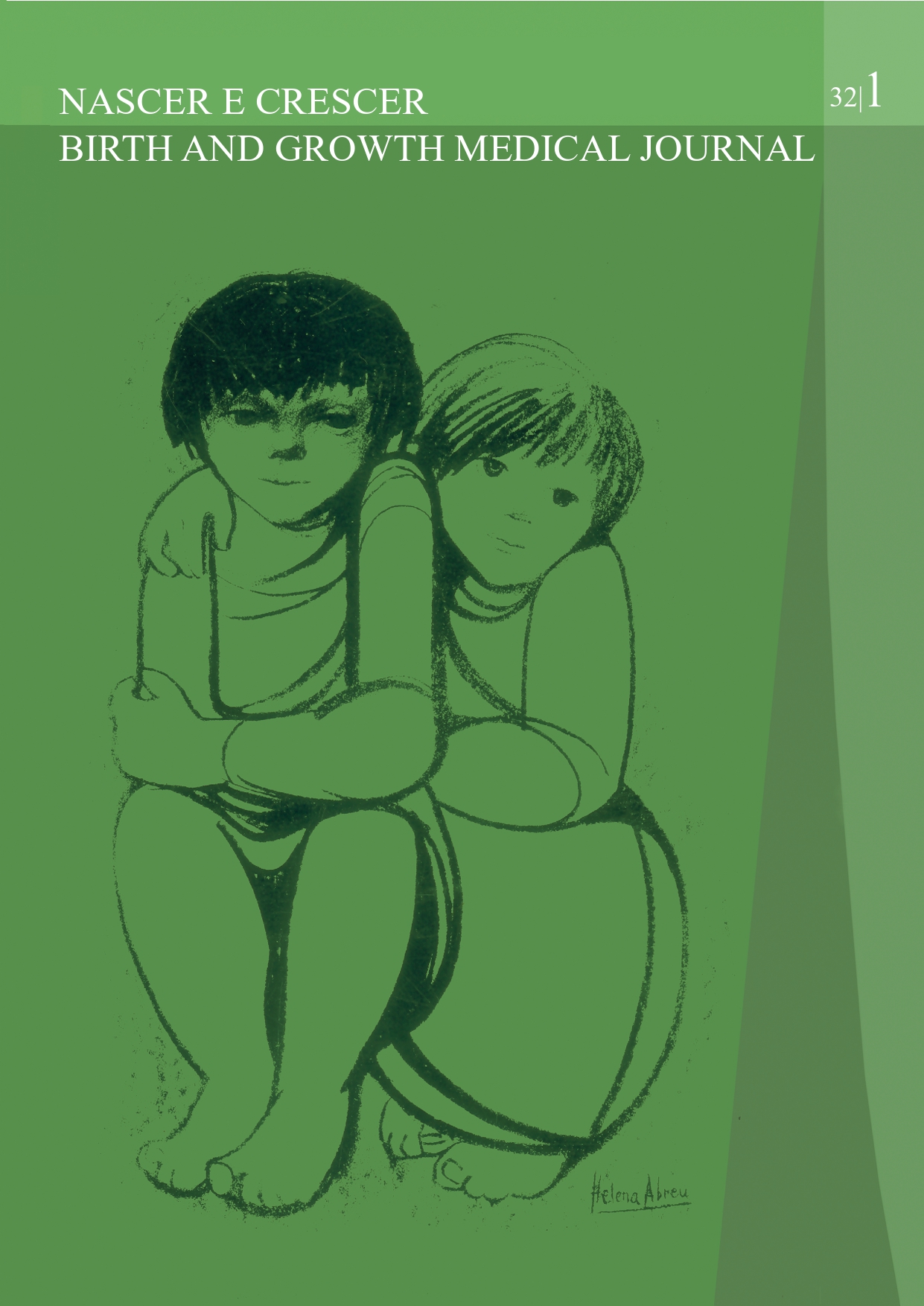Effect of methylphenidate in a child with pica and attention-deficit/hyperactivity disorder
DOI:
https://doi.org/10.25753/BirthGrowthMJ.v32.i1.25449Keywords:
attention-deficit/hyperactivity disorder, child, Methylphenidate, picaAbstract
Introduction: Pica and attention-deficit/hyperactivity disorder (ADHD) comorbidity has rarely been described in the literature. It has been suggested that pica and ADHD may share some neurobiological ground and that methylphenidate may be a reasonable treatment option for these patients.
Case report: Herein is reported the case of an eight-year-old boy with pica and ADHD who was successfully treated with methylphenidate. Notably, both disorders relapsed when methylphenidate was discontinued, with symptom control regained after its reintroduction.
Discussion: ADHD and pica may share features such as poor impulse control and dopaminergic system dysfunction, with several studies suggesting that dopamine may be the implicated neurotransmitter.
Conclusion: This case report adds to the existing body of evidence suggesting that methylphenidate is effective in pica and AHDH comorbidity. Nevertheless, there is a need for further research to better understand the effects of methylphenidate on pica.
Downloads
References
American Psychiatric Association DSM-5 Task Force. Diagnostic and statistical manual of mental disorders: DSM-5. 5th ed. Washington, DC: American Psychiatric Association; 2013.
Leung AKC, Hon KL. Pica: A Common Condition that is Commonly Missed - An Update Review. Curr Pediatr Rev. 2019;15(3):164–9.
McNaughten B, Bourke T, Thompson A. Fifteen-minute consultation: the child with pica. Arch Dis Child Educ Pract Ed. 2017;102(5):226–9.
Aloni MN, Lecerf P, Lê P-Q, Heijmans C, Huybrechts S, Devalck C, et al. Is Pica under-reported in children with sickle cell disease? A pilot study in a Belgian cohort. Hematology. 2015;20(7):429–32.
Hagopian LP, Rooker GW, Rolider NU. Identifying empirically supported treatments for pica in individuals with intellectual disabilities. Res Dev Disabil. 2011;32(6):2114–20.
Sturmey P. Pica and developmental disability. The Journal of the American Board of Family Practice. 2001; 14: 80–1.
Gunes H, Tanidir C, Adaletli H, Uneri OS. Effect of Methylphenidate on Impulsivity in a Child with Pica and Attention Deficit Hyperactivity Disorder. Klin Psikofarmakol Bülteni-Bulletin Clin Psychopharmacol [Internet]. 2016;26(1):87–8. Available from: https://doi.org/10.5455/bcp.20151013010546.
Del Campo N, Chamberlain SR, Sahakian BJ, Robbins TW. The roles of dopamine and noradrenaline in the pathophysiology and treatment of attention-deficit/hyperactivity disorder. Biol Psychiatry. 2011;69(12):e145-57.
Cardoso D, Duarte L, Pinto VF, Cartaxo T. Pica and attention deficit hyperactivity disorder: is there a link? Comorbidity and treatment outcomes with methylphenidate. Nascer e Crescer – Birth Growth Med J [Internet]. 2021;30(1):12–7. Available from: https://revistas.rcaap.pt/nascercrescer/article/view/18910.
Gautam P, Bhatia MS, Rathi A. Intellectual disability and multiple co morbid psychiatric disorders in a child: a case report. J Clin Diagn Res [Internet]. 2014/11/20. 2014 Nov;8(11):WD01-WD2. Available from: https://pubmed.ncbi.nlm.nih.gov/25584292.
Hergüner S, Hergüner AS. Pica in a child with attention deficit hyperactivity disorder and successful treatment with methylphenidate. Prog Neuropsychopharmacol Biol Psychiatry. 2010;34(6):1155-6. doi: https://doi.org/10.1016/j.pnpbp.2010.06.005.
Hergüner S, Ozyildirim I, Tanidir C. Is Pica an eating disorder or an obsessive-compulsive spectrum disorder? Vol. 32, Progress in neuro-psychopharmacology & biological psychiatry. England; 2008. p. 2010–1.
Singh NN, Ellis CR, Crews WD, Singh YN. Does Diminished Dopaminergic Neurotransmission Increase Pica? J Child Adolesc Psychopharmacol [Internet]. 1994;4(2):93–9. Available from: https://doi.org/10.1089/cap.1994.4.93.
Brahm NC, Farmer KC, Brown RC. Pica episode reduction following initiation of bupropion in a developmentally disabled adult. The Annals of pharmacotherapy. 2006; 40: 2075–6.
Downloads
Published
How to Cite
Issue
Section
License
Copyright (c) 2023 Diana Vieira, Maria Castello Branco

This work is licensed under a Creative Commons Attribution-NonCommercial 4.0 International License.
Copyright and Authors' Rights
All articles published in Nascer e Crescer - Birth and Growth Medical Journal are Open Access and comply with the requirements of funding agencies or academic institutions. For use by third parties, Nascer e Crescer - Birth and Growth Medical Journal adheres to the terms of the Creative Commons License "Attribution - Non-Commercial Use (CC-BY-NC)".
It is the author's responsibility to obtain permission to reproduce figures, tables, etc. from other publications.
Authors must submit a Conflict of Interest statement and an Authorship Form with the submission of the article. An e-mail will be sent to the corresponding author confirming receipt of the manuscript.
Authors are permitted to make their articles available in repositories at their home institutions, provided that they always indicate where the articles were published and adhere to the terms of the Creative Commons license.


